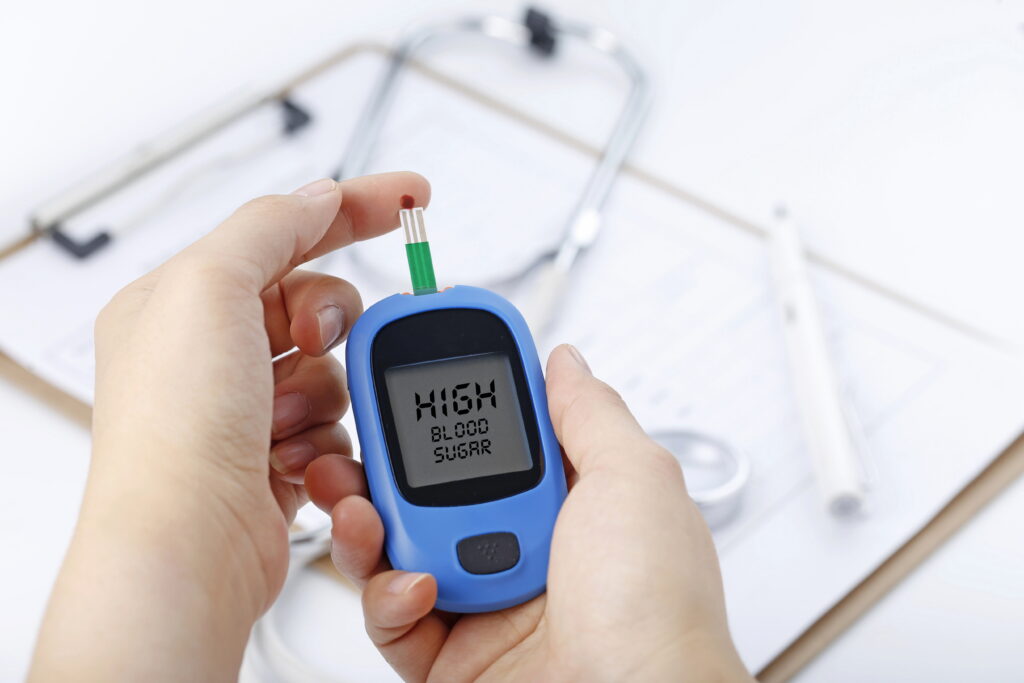- What is diabetes mellitus and how it occurs
- Types of diabetes mellitus
- How diabetes mellitus is diagnosed in pregnant women
- Who is at risk
- Symptoms of gestational diabetes
- What are the dangers of gestational diabetes mellitus in pregnancy?
- What other possible consequences
- How to treat
- Diabetes mellitus and childbirth
- Prevention in pregnant women
Statistically, a phenomenon that occurs in almost 18% of women during pregnancy is the occurrence of gestational diabetes mellitus in pregnancy (GDM). And if a woman can prepare for pregnancy planning with a diagnosis of diabetes mellitus (DM) of type 1 or 2 with special care, ruling out the possibility of its occurrence before the onset of stable compensation of carbohydrate metabolism for at least 2-4 months before conception of the baby, the development of gestational diabetes cannot be predicted one hundred percent.
A completely different situation occurs when diabetes is first detected during an already existing pregnancy and is a consequence of changes occurring in the pregnant woman’s body. However, signs of the presence of any, including chronic diseases in the expectant mother, to one degree or another pose a threat to the health of the unborn child.

What is diabetes mellitus and how it occurs
To understand the dangers of diabetes mellitus in pregnancy, it is necessary to understand what this disease is. DM is an endocrine disorder in which, due to a relative or absolute lack of insulin, chronically elevated blood glucose levels occur. Insulin is a protein-peptide hormone produced by the pancreas. This hormone is responsible for maintaining normal blood glucose levels, ensuring that it enters tissue cells for their nutrition.
When you develop diabetes, your metabolic processes go haywire. Depending on the type of disease, either the body loses sensitivity to insulin, or the pancreas does not produce it in sufficient quantity. As a result, glucose accumulates in the blood without reaching the cells. As a result, tissues experience energy starvation.
Types of diabetes mellitus
Taking into account the cause by which the disruption of glucose transport occurs, it is customary to distinguish:
- Type 1 diabetes mellitus – develops due to insulin deficiency, the patient is forced to take insulin-containing drugs due to the fact that the pancreas cannot cope with its production;
- Type 2 diabetes – the cause of its origin lies in insulin resistance, which means that the cells are insensitive to the hormone, despite the fact that there is enough of it in the body, due to which there is no glucose transport;
- Gestational – this diabetes in pregnancy develops with its onset and in most cases passes after delivery, dangerous to the health of the mother and fetus.
The condition characterized by reduced glucose tolerance is called prediabetic and is considered separately. Because on an empty stomach, sugar does not exceed the normal range, and the deviation is detected after a load of glucose.

How diabetes mellitus is diagnosed in pregnant women
Women who have not previously had diabetes may not even suggest that with the onset of pregnancy they have developed GDM. Its detection is ensured by the fact that during registration, blood glucose levels are necessarily taken and constantly monitored. To diagnose gestational diabetes in pregnancy, blood is initially drawn from a vein on an empty stomach. Values of 3.3 to 5.1 mmol/L are considered normal. If the norm is exceeded, a glucose tolerance test or analysis with glucose load is appointed.
The test consists of 2 steps. First, a normal test is taken on an empty stomach. Then the woman drinks a solution containing 75 g of glucose, and 2 hours later she takes the test again. If her suspicions persist, the test is repeated after a few hours. The diagnosis of GSD is considered to be confirmed when the fasting blood glucose level is within 5.1-7 mmol/l, and more than 8.5 mmol/l two hours after drinking 75 g of glucose.
Who is at risk
Unfortunately, gestational diabetes mellitus in pregnancy can develop in a perfectly healthy woman, so it is necessary to visit the doctor regularly and not to pass the recommended screenings. However, there are also risk factors associated with:
- Having close relatives with diabetes mellitus;
- Being over the age of 30 or under 18;.
- Multiple pregnancies;
- Polycystic ovarian syndrome;
- lack of physical activity;
- The presence of a large amount of fast carbohydrates in food;
- Unhealthy habits – alcohol abuse, smoking;
- Being overweight and obese, which definitely leads to metabolic disorders;
- The birth of a child weighing more than 4 kg;
- during the current pregnancy – a large fetus;
- a previous history of gestational diabetes or prediabetes, the predisposition to which does not disappear over time.
Symptoms of gestational diabetes
Typically, gestational diabetes mellitus in pregnancy develops at 15-20 weeks. Its detection in the early terms means that even before pregnancy, a woman already had type I or type II diabetes. The main problem with finding gestational diabetes during pregnancy is that it is usually not characterized by the symptoms of types 1 and 2. In most situations, the disease is asymptomatic, which is extremely dangerous for the expectant mother and fetus.
Expressed symptoms of GAD are quite rare, and all of them are nonspecific. For example, the expectant mother may experience excessive thirst and the related consumption of more than 2 liters of water a day, dry mouth, weight loss or gain. Pregnant women may complain of increased urination (polyuria), itching in the genital area, as well as lack of energy, changes in appetite, fatigue, weakness, reduced activity.

What are the dangers of gestational diabetes mellitus in pregnancy?
The development of gestational diabetes mellitus in pregnancy is a pathological condition and poses a threat to the health of the future mother and baby. This is due to the fact that the fetus, even before its birth, begins to actively produce insulin to compensate for the increased glucose in the blood of the mother. This leads to the fact that such children from birth tend to have low blood sugar. They also have a higher risk of type II diabetes and obesity in adulthood.
Gestational diabetes in pregnancy creates an additional risk factor for pre-eclampsia, a severe version of gestosis, high blood pressure. Signs of preeclampsia are lethargy, headaches, visual disturbances, nausea, vomiting, insomnia or drowsiness. This is one of the most severe disorders, affecting the central nervous system, which can provoke gestational diabetes in pregnancy.
What other possible consequences
Another disturbing factor in the presence of gestational diabetes in pregnancy is the rapid weight gain in the baby in the intrauterine period – macrosomia. Later this leads to difficulties in childbirth and poses a threat to the health of the mother. If the fetus weighs more than 4 kg, there is an increased risk of birth trauma, in which case it is more likely to need a cesarean section.
Large fetal size may lead to the need for an involuntary delivery before the due date, with an increased risk of preterm birth.
The consequences of high sugar in pregnant women also include an increased risk of a condition that makes it difficult for the baby to breathe (respiratory distress syndrome), nervous and cardiovascular abnormalities of the fetus, in general increases the risk and frequency of complications during pregnancy and childbirth.
How to treat
The first step in treating gestational diabetes in pregnancy is moderate exercise and a balanced diet. Its goal is to reduce sugar to normal values. Patients with all signs of GDM need the full range of minerals and vitamins necessary for the proper development of the fetus and maintain their health. Recommendations include eating frequent small meals, avoiding fatty baked goods and fast food, and diversifying your diet with fresh vegetables, cereals, and lean meats. Foods with a high glycemic index (bananas, grapes, sugar, white bread) are an absolute taboo.
Water exercise, walking, physical therapy and swimming will do you good. If exercise and diet have not led to a decrease in blood sugar levels, administer insulin therapy. High sugar requires daily measurement of glucose levels, which is carried out with a home glucose meter one hour after each meal and on an empty stomach.

Diabetes mellitus and childbirth
Diabetes mellitus in pregnancy is not only a serious threat to carrying a child, but also a risk of complications during childbirth. Recent research conducted by scientists at Wayne State University (USA) have shown that the optimal delivery date for a pregnant woman with GDM is the 39th-40th week of gestation. Specialists believe that this is the period when the risk of an operative variant of vaginal delivery in the mother and the development of distress syndrome in the child is minimal. Stimulation of labor at a later term often has negative consequences and may even have an unfavorable neonatal outcome.
Stimulation of labor until the 39th week is only indicated if there is a specific symptom. This may be a rupture of the amniotic membranes, hypertensive disorder, deterioration of fetal vital signs. It is also possible with ineffective glycemic control, significantly increasing the risk of stillbirth.
Prevention in pregnant women
Unfortunately, there are no unambiguously effective ways to protect against diabetes mellitus in pregnancy. However, the more useful habits a woman develops before pregnancy and in the early stages, the more successful pregnancy and childbirth will be.
Namely:
- From the first days consume low-fat and high-fiber foods, with priority given to whole-grain products and vegetables;
- Watch the size of portions and strive for variety;
- Spend at least half an hour in sports every day;
- Take daily walks, swim or ride a bicycle;
- plan a pregnancy at a normal weight, do not gain excessively and quickly – this increases the risk of gestational diabetes in pregnancy.
A healthy lifestyle, despite the absence of universal protection against GDM, will reduce the risk of its occurrence. It is very important to detect its signs in time and not to let the disease develop.



Download the app and get 7 days free use




